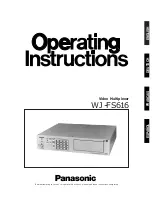
ANNEX A - CONSTRUCTING AN IP NETWORK ADDRESSING PLAN
Installation and User Guide - N56717020101
No reproduction or communication without the written consent of
SAGEM SA
Page AA-3
A.3 - Addressing plan
A global IP network may be sub-divided into N networks, each with a "NET" number.
Within each network, each physical link (point-to-point or point-multipoint) has its own "SUBNET"
number.
Each equipment connected to this link (2 for point-to-point link, N for an Ethernet segment), has
its own "HOST" number.
Depending on the number of equipment pieces and links, address classes A, B or C are used
with "SUBNETS" coded over one or two bytes.
To conclude, an IP address and its "SUBNET" mask must be associated with each interface of a
network node.
A.4 - Use of static tables
Concerning the use of static tables, each network node must have its routing table completed in
order for it to be able to route correctly the received packets.
All IP routes of a given equipment routing table contains the following fields:
•
"destination @ip" : corresponding to the IP address of the equipment or sub-network (or
network) that is targeted from the equipment in question,
•
"subnet mask" : sub-network mask associated with the IP address defined in "destination
@ip"; all equipment pieces with this part of their IP address fields defined by "1" bits
correspond to the "destination @ip" (defined by this same mask) that can be attained using
this route,
•
"next hop @ip" : IP address of the next router (in direct connection with the equipment in
question) to which the packet is to be sent,
•
«metric» (also named «cost» or distance) : value from 1 to 15, indicating the number of hops
required to reach the equipment corresponding to the "destination @ip" address. 16
corresponds to infinite for the RIP routing demon. This field may only be used by a routing
demon to select a preferential route if there are several different possible routes for a given
destination. It is possible to always enter "1" for this field in order to simplify, if this operation
is not required,
•
"interf." : interface number used to reach the next router (the IP address of which is "next hop
@ip").
Rem : The declaration of interface IP addresses induces the establishment of implicit static
routes to associated SUBNETs. So, it is not necessary to define static routes to join two
equipments of the same SUBNET.
Rem : The equipment IP addresses are the addresses of its configured interfaces (or ports).
The manager knows only one IP address per equipment. So, IP address of an
equipment is frequently used to refer to the address filled in the manager database. This
is the address of the port through which the equipment interacts normally with manager.
Rem : To operate an equipment via a PC and an Ethernet interface, it is necessary to change
the IP address of the operating PC for the PC to belong to the same SUBNET as the
Ethernet interface that is used to be connected to the network.
It is advisable to leave HOST 1 number free on each SUBNET, i.e., to start numbering
the equipments from HOST 2 number. Thus, the PC will always take an IP address of
this type: NET.SUBNET.1
















































